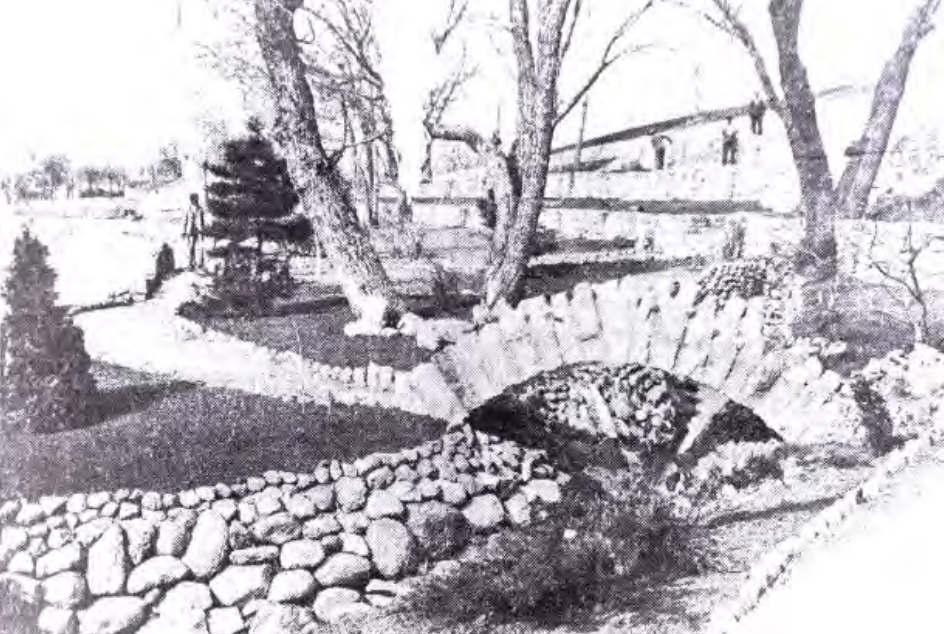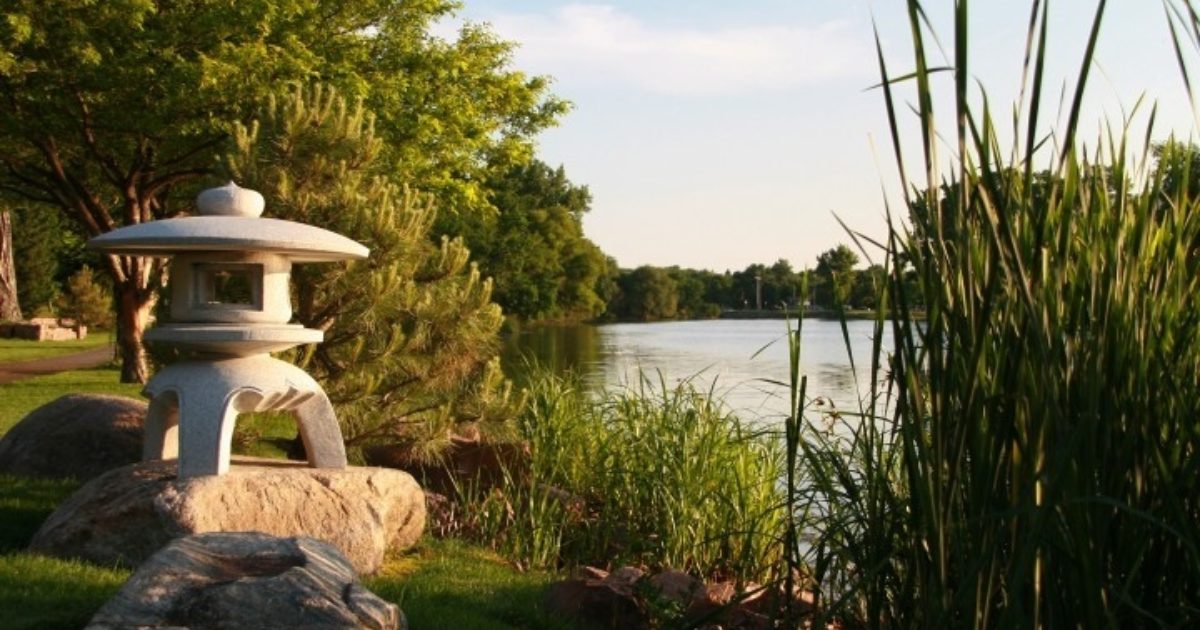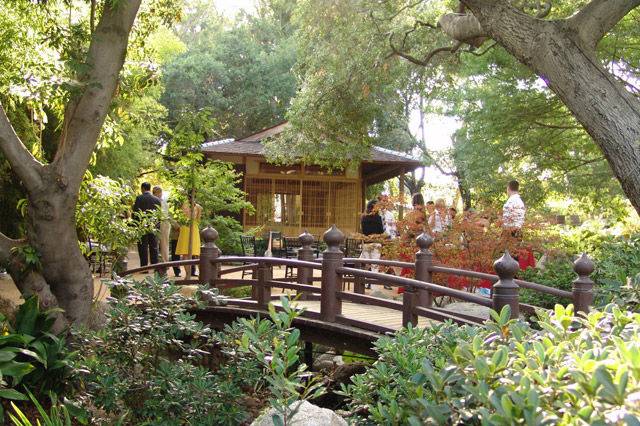You are sailing on a pond
tinted crimson by the setting sun.
By the time the full moon rises,
you change to a tiny houseboat
and hold a tea ceremony
while admiring the moon
mirrored in the water…
The traditional Japanese Zen garden is highly renowned all over the world for its understated beauty. To the owners, these gardens are like canvases. They use the changing seasons as paintbrushes and rely on minimalism to create a sense of equilibrium. From the meticulously raked gravels of the temples to the careful pruning, leaf by leaf, of each bush, gardening in Japan has gone far beyond a form of art. Rather, it’s a meditative practice, inspiring mindful contemplation in both the gardeners and visitors.
Amidst the chaos of the modern, “technologically advanced” world we are living in, finding peace of mind becomes increasingly tricky. That’s why more and more Americans are drawn to the philosophy of Japanese gardens, of the calmness and wonder they symbolize. Here’s the good news: You don’t have to go halfway around the world to experience this Edo tranquility!
Last week, I had a chance to visit the Sioux Falls Japanese Gardens – an amazing finding in South Dakota. This outdoor oasis is poetic enough to stimulate my imagination, and I’ve pictured the scenery of a boat trip described above. After the trip, I feel obligated to write this article and let everyone knows about South Dakota’s well-crafted garden design.
Tracing Back In Time: The History Of Sioux Falls Japanese Gardens
To many people, seeing a Zen garden in the middle of Sioux is quite strange. I mean, it’s the beating heart of South Dakota, where people frenetically rush down every street, every building, and every shop. Does it have anything in common with the Japanese philosophy of minimalism and inner peace? Probably not!
However, since the gardens’ serene ambiance and slow pace are contrasted with the city’s hustle and bustle, it offers everyone a much-appreciated escape from daily life. As Redditor “TurtleSandwich” wrote, “the open space is exactly where it needed to be”. That’s what Joseph Maddox envisioned when he established his work of art in 1928.

Born Out Of A Hope To Find Peace Of Mind
Maddox was born on December 16th, 1888, in the town of Ogden, Iowa. He spent his early years in Perry before moving to Sioux Falls in 1914. Four years later, he was hired as Terrace Park’s caretaker. While taking a course in landscape design, Maddox discovered the idea of a Japanese Zen garden. He heard about such a garden in Faribault, Minnesota. After checking it out himself, the exuberant man believed that experiencing such a mindful atmosphere could help everyone find their inner peace.
From then on, Maddox dedicated all his off-duty time to laying out his vision. Local rocks of varying shapes and sizes were used to construct the temple, and the flower pots were made from unique stones collected from the Big Horn Mountains’ foothill. The diversity of the rocks Maddox selected and used for the garden doesn’t only represent his emotional investment but also contributes to the overall aesthetic. The city work relief programs assisted him with the garden’s rough landscaping and shaping.

Six years after Maddox came up with the design, his dream of a Japanese Garden in Sioux Falls became a reality. In 1934, Maddox’s effort paid off with an award from Better Homes & Garden Magazines.
Revived Out Of A Belief In The Power Of Cultural Exchange
But the story of Sioux Falls Japanese Gardens isn’t filled with beautiful notes. During the winter of 1941, the Japanese air force launched an attack on the U.S. Naval base in Pearl Harbor. Following was a widespread anti-Japanese prejudice, and Terrace Park’s Japanese Gardens were caught in the chaos. Vandalism ruined the garden’s serenity, which was further damaged by years of neglect. Postcards and other forms of media referred to it as an Oriental or Chinese garden.
Just a few years later, Maddox walked away from his position. The abuse of his brainchild devastated him greatly. For the remaining of his life, it was Maddox’s most ardent wish to see the garden returned to its former grandeur. He passed away in 1979, never seeing this fulfilled.
In 1988, a group of concerned residents came together and took Maddox’s work under their wing. They established the Shoto Teien Japanese Garden committee and sought the assistance of an arborist, Ben Chu, who specialized in Japanese Zen art. For the next two decades, he helped the committee guide the garden into the tranquil haven it is today.
Touring The Sioux Falls Japanese Gardens
For its history and heritage value, the Sioux Falls Japanese Gardens is well-loved by locals and tourists alike. Though not as spacious as Morikami – a museum and Japanese space near Miami, or Portland Japanese Garden in Oregon, it’s still a modern refugee for us to slow down and contemplate, to let go of worldly thoughts and see ourselves as small but integral parts of the universe.
Now, imagine you have been whisked away to Sioux Falls and are making your way to Terrace Park with the guide of Google Maps. Let’s explore all the elements that make this Japanese garden a work of art, shall we?
Stones

To enter the Sioux Falls Japanese Garden, after passing through the front gate, you will find yourself walking on carefully-paved stone staircases.
Stones hold a special place in Eastern philosophy. It represents duration and the omnipresence of nature’s forces.
As mentioned, Joseph Maddox carefully selected and used a variety of stones to construct his garden. Aside from “attaching the place to the ground”, as the Japanese believe, these stones also give it a unique personality: They are arranged with strict rules, depending on their sizes and shapes. Imagine you have to lay them out this way, you will understand how much effort was put into it. Observe it closely, and the stair will strike you with awe.
If you look at the central lake, you can also see some rocks sticking out of the water. Well, they are there for a reason! The low, flat rock represents a tortoise – a symbol of longevity. According to Japanese folklore, the tortoise has a lifespan of 10,000 years.
Water
Water is prominent among all the elements that make up a Japanese garden. Representing nature, it stands for rebirth, tranquility, wonder, and continuity beyond death.
When you come to Terrace Park’s Japanese Garden, stop for a second and take in the stunning view of the mirror-like lake. Located in the middle of the garden and surrounded by lush green trees, it is picturesque all year long. Our group spent the whole day picnicking by the lake, getting our daily dose of fresh air, and participating in exciting outdoor sports.

But water in a Japanese garden can come in many shapes, and the lake is not the centerpiece here. The lovely stroll garden paths will lead your wandering steps to a small waterfall. The soothing sound of streams drizzling onto the rocks contributes to the garden’s serene ambiance. All you want to do in a place like this is unplug, wind down, and appreciate the surrounding.
The Lanterns

Another leading element in the design of a Japanese garden is the lantern.
Originally designed to light up the way for guests during nocturnal celebrations, the lantern was later considered a symbol of wisdom, dispelling the darkness of ignorance.
Sculptured in stone, the traditional Yukimi-gata lanterns (also known as snow lanterns) dot every path at Terrace Park’s Japanese garden. Placed near the lake and the waterfall, this elegant architectural element creates an interesting visual contrast with the garden’s natural components.
Since nothing says “Japanese vibes” more than these lanterns, they would also make wonderful photography props. While we were there, we could spot several couples taking wedding photos along the pathways.
The Bridge
The true significance of a Japanese bridge goes much beyond its practical value. It has solid spiritual connotations that help visitors enter a more meditative state of mind while wandering the garden.
Crossing the bridge symbolizes the journey between the mortal world into the hereafter and the purification of one’s worldly burdens that follows. Through this transition, the individual would experience a sense of self-realization, calmness, and unity with nature.

The wooden bridge at Terrace Park wasn’t painted or varnished, allowing it to weather and age naturally. This embodies the Japanese philosophy of wabi-sabi: Beauty can be found in aging and imperfection.
As you stroll through the garden, you might want to linger on the bridge. Marvel at the surrounding splendor, watch the carp swimming leisurely in the lake and feel the softness of the breeze on your skin.
Plants
Of course, it’s not a garden if we miss out on the most crucial component: The plants.
Plants symbolize moving thoughts, feelings, and universal forms of life. After spending a few years in Japan, I realized one thing: Even the best gardens in Japan are supported by a subdued color palette. Following this principle, the Japanese gardens in Terrace Park are filled with Japanese maples (Momiji), pine, and plum yew instead of colorful plants that you are more likely to see in the temperate zone.
All of these plants are perfect for shady corners, so even in the summer, you can enjoy a relaxing stroll without worrying about the dazzling sun. Luckily, I visited the garden in the fall, and the maple leaves just began to change shades. That was one of the most stunning sceneries I’ve ever seen when the reds and oranges contrasted spectacularly with South Dakota’s clear blue sky.
According to the locals, springtime at Sioux Falls Japanese Garden is terrific, too. When March rolls around, the place busts to life with thousands of cherry blossoms. What better way to celebrate the warmer months than food, drink, and good company under the blossoming branches?
Japanese gardens Sioux Falls bloom beautifully in spring
Finding Peace From Within
In the last few decades, we Americans have finally come to understand the value of “self care” in modern times. However, Japanese people have known for thousands of years that meditation and self-care are the keys to finding peace of mind; to a long, happy, and fulfilled life.
As James Allen said, “The more tranquil a man becomes, the greater is his success, his influence, his power for good. Calmness of mind is one of the beautiful jewels of wisdom”. Here at the Sioux Falls Japanese Gardens, you can slow things down with a cup of tea, reconnect with Mother Nature, and decompress. By immersing in such a mindful atmosphere, you will soon discover your inner, long-lasting contentment.

